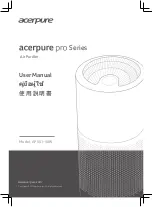
53
8. Additional Refrigerant Charge
8.1 Air Tightness Test
(1) Ensure that the stop valve is completely closed before airtight inspection.
<Air tightness detection>
(a) After you connect the liquid pipe, open the liquid side stop valve bonnet. Do not connect low
pressure piping and gas side stop valve. Seal the low-pressure side of the pipe line by welding
with a filed supplied cap.
(b) After the above test is completed, carry out the air tightness detection.Please refer to page 31.
(2) Connect the indoor and outdoor units with the refrigeration pipe provided on the site.
Provide support at regular intervals to prevent the cooling pipe touching the wall, ceiling of the
building. (Piping vibrations cause abnormal sounds, hence pay much more attention when the
piping length is shorter).
(3) Connect the regulating valve and the vacuum pump or the nitrogen tank specially to the test joint
of the liquid valve. Conduct air tightness test. Connect the regulating valve to the check joint of
the outdoor liquid side valve, and do not open the liquid side stop valve. Ensure that the nitrogen
pressure is 4.15MPa.
DANGER
!
Ensure that you carry out air tightness test only with nitrogen. If other gases such as oxygen,
acetylene, or carbon hydrocarbon gas are used for airtight test, it can cause explosion or
toxication.
(4) Use leakage detector or bubble to detect if there is leakage at the flare nut and brazing position.
(5) After the airtight test, release the nitrogen, remove the low-pressure side pipe welding sealing cap,
and brazing then the gas side stop valve and low pressure side piping welding.
(6) After completion of piping connection, install the pipe insulation material.
Procedure
Connect
refrigerant pipe
Fill
Nitrogen Gas
Check of pressure
Decrease
Pass
Repairing of
Leakage part
Gas side
stop valve
The outdoor unit
1
2
N
Liquid
side stop
valve
Manifold
valve
Nitrogen
gas tank
Figure 8.1 Air tightness test
















































